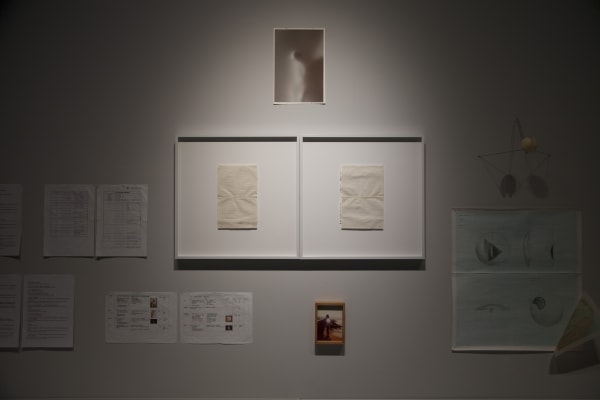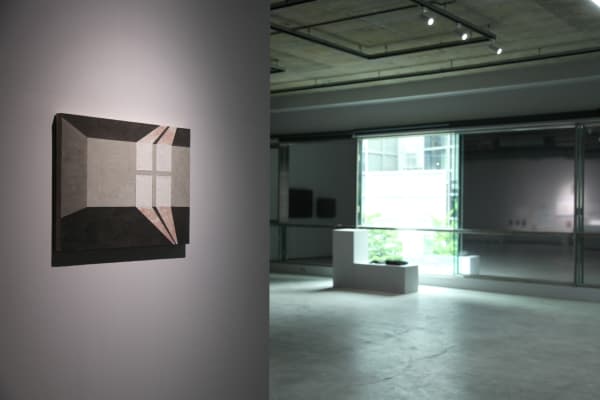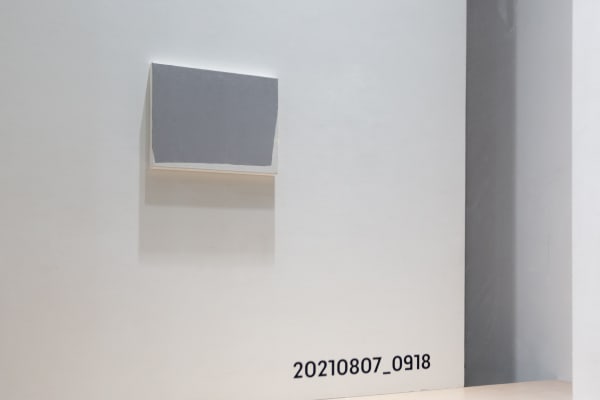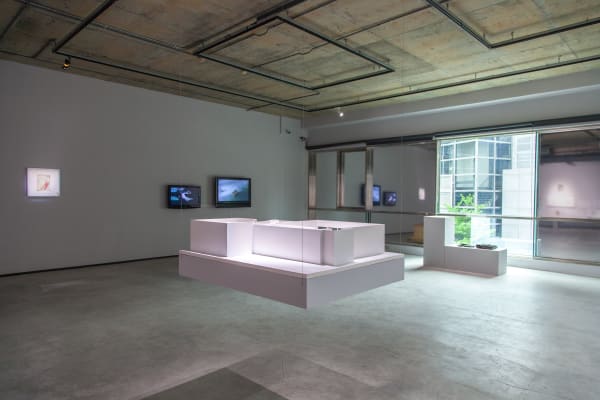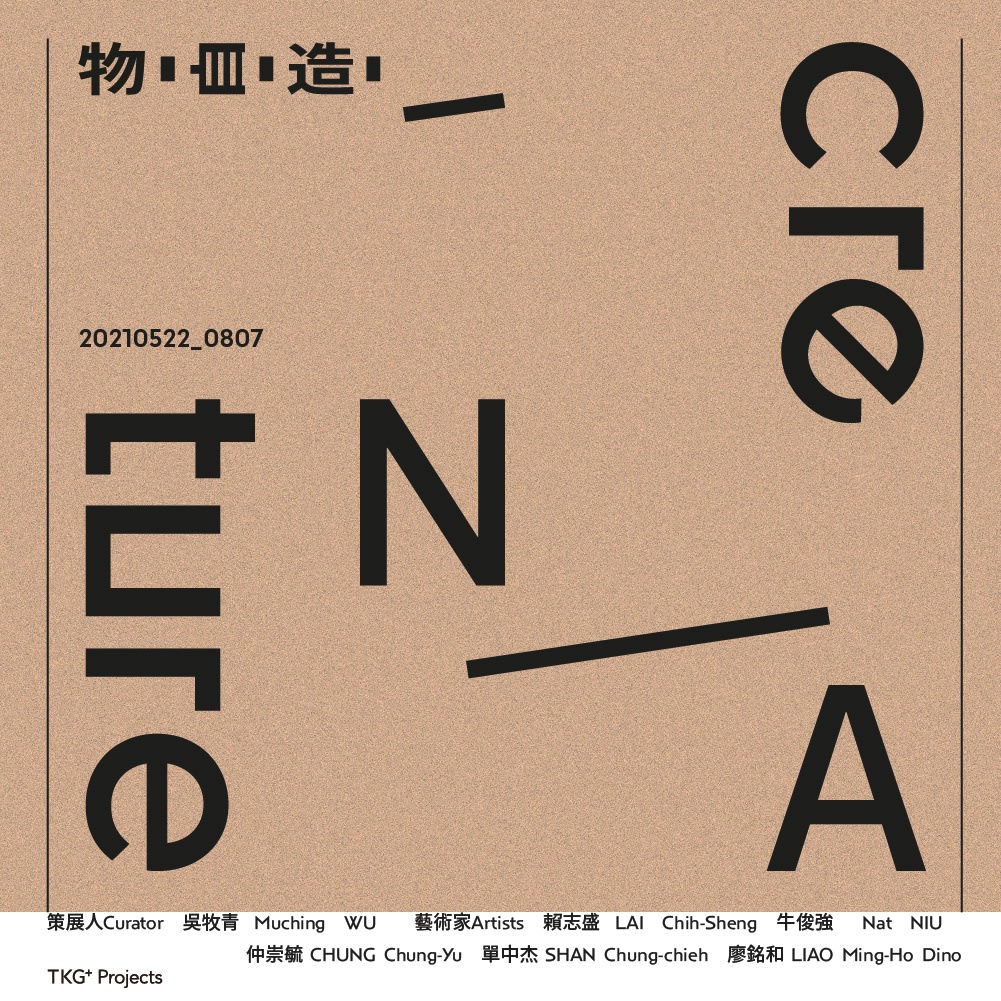creN/Ature: Curated by Wu Muching
Dates
7 AUGUST - 18 SEPTEMBER 2021
Curator | Wu Muching
Participating Artists | Lai Chih-Sheng, Niu Jun Qiang, Dino, Chung Chung-Yu, and Shan Chung-Chieh
TKG+ Projects is pleased to present creN/Ature, a group exhibition curated by Wu Muching. Participating artists include Lai Chih-Sheng, Niu Jun Qiang, Dino, Chung Chung-Yu, and Shan Chung-Chieh, some familiar and others unknown in Taiwan’s art circle. The curator intends the exhibition to serve as an intimate question about art making: As a creation of God and a creator of art, what does each artist think is the relationship between all sentient beings, the act of creation, and the role of creator?
In the five participating artists Wu sees several relationships emerge that mirror his own life experiences with art. Dino, Wu’s best friend and playmate when Wu worked as a journalist at the Pots Weekly, indulged Wu with chitchat about art stories on the fringe of the art circle. Lai Chih-Sheng, Wu’s closest confidant during this past year, has forged a friendship with him where despite Wu being a curator and writer, rarely do they converse about art purposely. Niu Jun Qiang participated in Wu’s 2012 curatorial project, Compound Eyes: Killing Image Lots in Taipei, where Niu presented one spartan work of art, while in 2021’s creN/Ature, Niu ponders the act of creation through a carefully selected array of manuscripts and documents from his past creative process as a dialectic between objects’ history and the attestation of art making.
Chung Chung-Yu, whom Wu found surprisingly, after having established the focus of this curatorial project, to be an ideal candidate as someone who blurs the boundary between creation/non-creation, work of art/non–work of art. As an artist, Chung is known for his deft handling of cement and painting, as well as maneuvering materials to conjure an environment his art inhabits. As part of the TKG+ Projects staff for the past four years, he has been involved in exhibition implementation. This time, his participation in creN/Ature accentuates his dual role as a gallery staffer and an artist. Shan Chung-Chieh was a senior to Wu in a gifted math class during middle school. Years ago, Shan was the center of attention as a trailblazing hacker in the early age of the Internet. After nearly three decades, and a recent serendipitous conversation between Wu and Shan about possibly making art, Shan decided to participate in this exhibition, during his break from his teaching position at Indiana University amidst the Covid pandemic.
As this is not an exhibition curated according to a specific topic, Wu says, it will certainly not be “transparent at first glance.” Even Wu himself has been in a state of uncertainty from the planning stage up until before the exhibition opens, where he vacillates between the vantage points of the five artists. Wu considers the exhibition as a radical act that foregrounds the concept of art making and the nature of an exhibition. The techniques of exhibition execution and display recede into the background, while the intent of art making comes to the fore. Ultimately the exhibition examines how the psychological states of the artists are manifested in the objects they have created, and sheds light on what art making is.
Participating Artists
Lai Chih-Sheng
Born 1971 in Taipei, Taiwan, Lai Chih-Sheng was a member of the conceptual art group National Oxygen, presenting his early work in disused structures around the periphery of Taipei. Conjuring a minimalist, odd reality in prosaic surroundings, his work pivots around labor, waste, site-specificness, and a fugitive moment when possibilities of art making expand and multiply. His 13 years of experience as a plasterer have served to underpin his artistic practice.
His Artwork (2012) is a sculpture that mimics a pedestal, while in Life-Size Drawing (2012), single lines were manually drawn around the architecture of the space. Further interventions include Border (2013), in which viewers edge along a narrow path suspended from the venue’s walls above a centerpiece of discarded materials left behind by exhibition installers. The path becomes a stage on which viewers walk to observe the detritus, while being observed by others.
Niu Jun Qiang
Born 1983 in Pingtung City, Taiwan, Niu Jun Qiang has a M.F.A. in new media art from Taipei National University of the Arts. He is also an assistant professor of the communications design department at Shih Chien University in Taipei. Ranging from video, film, to mixed-media installation, his work examines intangible encounters in everyday life, nuanced connections between people, as well as the consciousness of the individual and of the collective.
He has exhibited internationally, including: International Film Festival Rotterdam (Netherlands), Osmosis Audiovisual Media Festival (U.K.), Pixilerations Tech Art Exhibition (U.S.), Cutlog New York (U.S.), Aguilar International Short Film Festival (Spain), Asian Film Festival in Tours (France), ARTchSO Video Festival in Rennes (France), Interdisciplinary Art Festival Tokyo (Japan), ACC Asian Arts Space Network Show (Korea), Taipei Golden Horse Film Festival (Taiwan), Taiwan International Video Art Exhibition (Taiwan), and Taipei Film Festival (Taiwan).
Dino
Born in 1976, Dino is part of the vanguard of the noise movement in 1990s Taiwan. Dino’s electronic sound system consists of simple analog equipment: Instead of using synthesizers or samplers, he opts for electrical noise, static electricity, or microphone feedback to create a personal signature in his music. Dino has been committed to extensive research in British punk and Chinese classical culture, influences of which pervade his work. Dino has performed internationally, including at Café OTO, London, U.K.; Midi Music Festival, Beijing, China; and Digital Art Festival, Taipei, Taiwan. He also produces soundtrack music for experimental films and experimental theater. He received the Best Sound Editing Award at the Taipei Film Festival. Most recently, Dino received the Visual Arts Award of the 2021 Taishin Arts Award for his collaboration with Chang Ting-Dong and Cheng Hsien-Yu on the work Taipei Robot Man 2.0: Infodemic.
For creN/Ature, Dino presents an eponymous work, which is a new sound mixer he had never used, but will use in his live performances after this exhibition ends. In addition to a live performance on the opening day, the artist will also launch an online NFT auction during the exhibition period, as a dialectic about the paradoxical relationship between auctions and gallery sales.
Chung Chung-Yu
Born in 1993, Chung Chung-Yu has a B.A. degree in visual arts from the University of Taipei. Upon graduation, he began working in exhibition planning and execution at TKG+, a leading gallery in Taipei. Chung’s passion for work and for art making has allowed him to explore the organic potential of exhibition installation with an understanding of the symbiotic relationship between an artist’s state of being and their creative flow.
It came to Wu Muching’s attention that a young artist such as Chung could cultivate creative thinking and passion for art making on a gallery job that he has worked for four years. That, coupled with Chung’s ability to construct an imagined space within a physical space in his artistic practice, has led the curator to see in him the eliding of boundaries between his dual role as a gallery staffer and an artist, as well as the opening of a window onto the landscape of creation.
Shan Chung-Chieh
Born in 1978 in Taipei, Taiwan, Shan Chung-Chieh has a B.A. degree in mathematics and a PhD degree in computer science from Harvard University. He is now an associate professor at the computer science department at Indiana University.
Shan develops so-called probabilistic programming languages. In layman's terms, he is interested in relational meanings. His work taps into and enhances the human ability to create concepts, combine concepts, and share concepts by lining up formal representations and what they represent. As for taking up the role as an artist for the first time, “Art, for me, is another form of communication,” he says. “As a viewer and as a creator, I hope my artistic work is much less than my academic work is about what area each work falls into, how exhausting research is, and what the use of the work is.”
Wu Muching
Born in 1977 in Taipei, Taiwan, Wu Muching was once an ordinary kid among gifted students. Years later, he grew up to be an art critic with illocutionary intentions and a dilettante curator, with a frail thirst for knowledge and a dim sense of suspicion, as well as an aspiration to be a writer outside his comfort zone. Ineluctably caught between the role of a self-directed learner and that of a passive activist, the former allows him to cultivate wide-ranging interests, while the latter has earned him a name as a writer who intervenes in cultural policy and the politics of art.
-

-

Photo credit / 牛俊強 Niu Jun Qiang
-

Photo credit / 牛俊強 Niu Jun Qiang
-

Photo credit / 牛俊強 Niu Jun Qiang
-

Photo credit / 牛俊強 Niu Jun Qiang
-

Photo credit / 牛俊強 Niu Jun Qiang
-

Photo credit / 牛俊強 Niu Jun Qiang
-

Photo credit / 牛俊強 Niu Jun Qiang
-

Photo credit / 牛俊強 Niu Jun Qiang
-

Photo credit / 牛俊強 Niu Jun Qiang
-

Photo credit / 牛俊強 Niu Jun Qiang
-

Photo credit / 牛俊強 Niu Jun Qiang
-

-

-

Photo credit / 牛俊強 Niu Jun Qiang
-

-

-

-

-

-

-

Photo credit / 賴志盛 Lai Chih-Sheng
-

Photo credit / 賴志盛 Lai Chih-Sheng
-

Photo credit / 賴志盛 Lai Chih-Sheng
-

Photo credit / 賴志盛 Lai Chih-Sheng
-

Photo credit / 賴志盛 Lai Chih-Sheng
-

Photo credit / 牛俊強 Niu Jun Qiang
-

Photo credit / 牛俊強 Niu Jun Qiang
-

Photo credit / 牛俊強 Niu Jun Qiang












